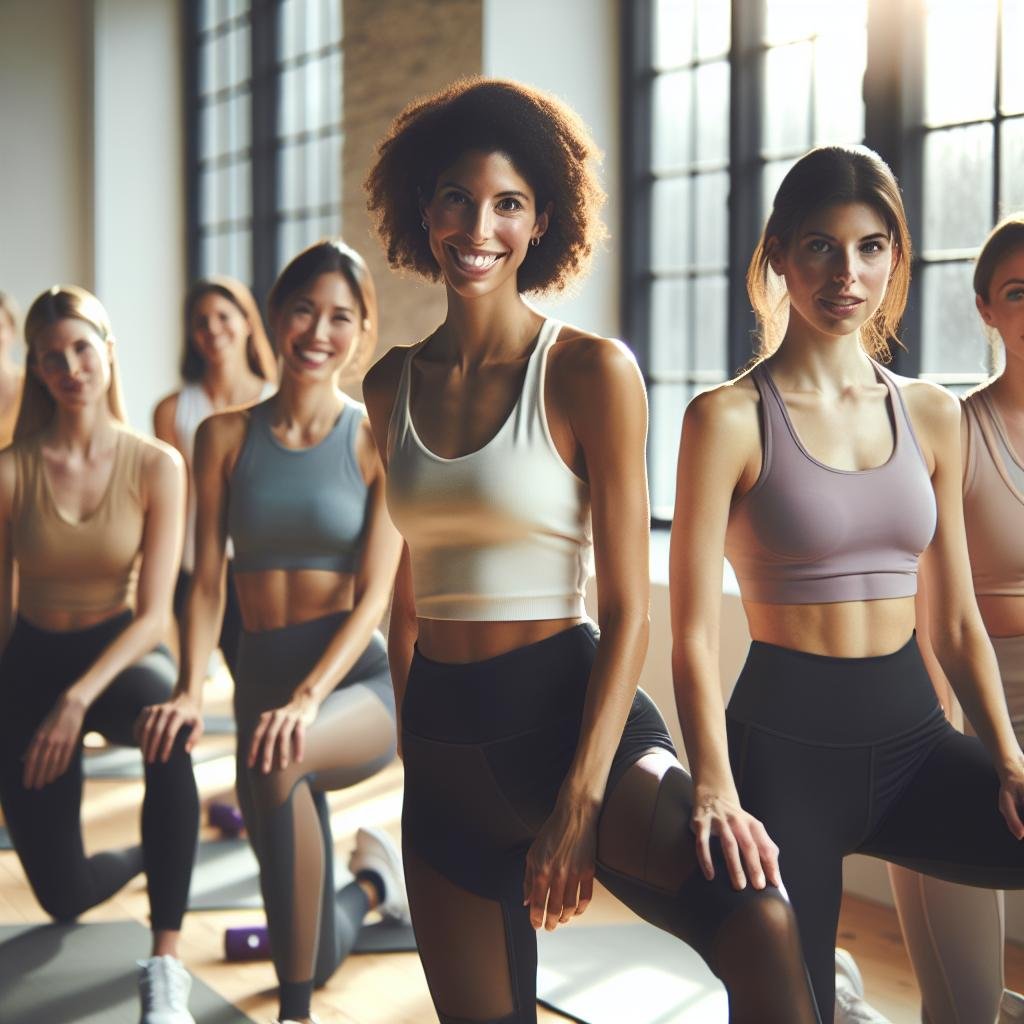
Transgender Women Gym Access Guide | Essential Insights
The debate around transgender women’s access to female-only fitness spaces has intensified following Fernwood Fitness’s recent policy clarification. This women-only gym chain has explicitly stated that their facilities are exclusively for “biologically born females,” effectively excluding transgender women. This decision has sparked important conversations about inclusivity, safety, and rights in gender-segregated spaces.
Understanding these complex policies is crucial for transgender individuals seeking fitness options and for gym-goers wanting to support inclusive environments. This guide explores the current landscape of gym access policies, legal considerations, and practical alternatives for transgender women.
Understanding Fernwood’s Policy Decision
Fernwood Fitness, Australia’s largest women-only gym chain with over 70 locations, recently made headlines after clarifying their membership criteria. The company confirmed that their services are exclusively for “biologically born females” – a policy that effectively prevents transgender women from becoming members.
This stance became public when a transgender woman shared her experience of being denied membership at a Sydney location. According to reports, she was told the gym was for “females only” despite explaining that she identifies as a woman.
Fernwood’s CEO Diana Williams defended the policy, stating:
“Our gyms were established to provide women with a comfortable and supportive environment where they can focus on their health and fitness goals without feeling self-conscious or intimidated.”
The company maintains that their policy aligns with exemptions in anti-discrimination laws that permit single-sex services in certain circumstances.
Legal Framework and Exemptions
The legal landscape regarding transgender access to gendered facilities varies significantly across different jurisdictions. In Australia, where this case originated, the situation is complex.
Australian Context
Under the Sex Discrimination Act, discrimination based on gender identity is generally prohibited. However, the law does include exemptions for “single-sex services” where they’re considered “necessary” or “appropriate.”
Fernwood operates under these exemptions, which allow businesses to restrict services based on sex in certain circumstances. Similar exemptions exist in many other countries, though their application varies widely.
International Variations
In the United States, laws differ by state. Some states have explicit protections for transgender individuals accessing facilities that align with their gender identity. Others remain silent on the issue or permit exclusions.
The United Kingdom has recently seen significant debate on this topic. The Equality Act 2010 protects against gender identity discrimination but also includes exemptions for single-sex services where “necessary and proportionate.”
These legal nuances create a patchwork of policies that can be confusing for transgender individuals to navigate.
The Safety and Comfort Debate
Central to discussions about transgender access to gendered spaces is the balance between different needs and concerns.
Perspectives Supporting Exclusive Policies
Proponents of policies like Fernwood’s argue that some women feel more comfortable exercising in spaces restricted to those assigned female at birth. These arguments often center around:
- Creating environments where women feel physically safe
- Addressing concerns about physical strength differences
- Providing spaces free from perceived male gaze
- Religious or cultural considerations about modesty
Fernwood emphasizes that their business model specifically caters to women who prefer training exclusively with other biologically female individuals. They maintain that this environment helps some women overcome barriers to exercise.
Perspectives Supporting Inclusion
Advocates for transgender inclusion highlight several counterpoints:
- Transgender women face significant discrimination and safety concerns in many public spaces
- Hormone therapy substantially alters physical characteristics for many transgender women
- Blanket exclusions fail to account for individual circumstances
- Policies that exclude transgender women can reinforce harmful stereotypes
Equality Australia CEO Anna Brown noted that “transgender women are women and should be able to access services appropriate to their gender,” adding that “exclusionary policies can cause significant harm to transgender individuals.”
Practical Solutions for Transgender Women
For transgender women seeking fitness options, several alternatives exist that may provide more inclusive environments.
Finding Trans-Inclusive Gyms
Many mainstream and boutique fitness centers explicitly welcome transgender members. When researching options:
- Look for gyms with clear inclusion policies on their websites
- Check for transgender-specific mentions in their diversity statements
- Read reviews from LGBTQ+ community members
- Contact management directly to ask about their policies
Several gym chains have publicly committed to transgender inclusion. For example, Planet Fitness has a well-known policy allowing members to use facilities matching their gender identity.
Creating Comfortable Workout Environments
Beyond finding the right facility, transgender women can take steps to create more comfortable workout experiences:
- Consider working with personal trainers who have experience with transgender clients
- Seek gyms with private changing areas if locker rooms cause anxiety
- Look for facilities with gender-neutral bathroom options
- Try off-peak hours initially if feeling anxious about crowded spaces
Some transgender women report feeling more comfortable starting their fitness journey with online workouts or home exercises before transitioning to public gym spaces.
The Role of Inclusive Fitness Communities
Beyond traditional gyms, specialized fitness communities can provide supportive environments for transgender individuals.
LGBTQ+ Focused Fitness Options
In many larger cities, LGBTQ+-specific fitness spaces have emerged as alternatives to traditional gyms. These facilities explicitly center inclusion in their business models and may offer:
- Staff trained in transgender cultural competency
- Gender-neutral facilities throughout
- Programming specifically designed for LGBTQ+ communities
- Community events that foster connection
Organizations like The OUT Foundation connect transgender individuals with LGBTQ+-affirming fitness options and create inclusive fitness events.
Building Support Networks
Finding workout partners or groups can significantly improve the gym experience for transgender women. Options include:
- Connecting with local LGBTQ+ sports leagues
- Joining transgender support groups with fitness components
- Finding allies willing to accompany you to new fitness spaces
- Participating in virtual fitness communities
These connections not only enhance safety but can make fitness more enjoyable through shared goals and experiences.
Advocating for Change
For those interested in promoting more inclusive fitness environments, several approaches have proven effective.
Supporting Inclusive Businesses
Economic decisions can influence business practices. Consider:
- Choosing to patronize gyms with explicit transgender inclusion policies
- Providing positive reviews for inclusive businesses
- Recommending transgender-friendly facilities to friends
This approach rewards businesses that prioritize inclusion and creates market incentives for others to follow suit.
Education and Awareness
Increasing understanding about transgender experiences can help shift policies over time:
- Share personal stories when comfortable and safe to do so
- Provide educational resources to gym owners and managers
- Support organizations advocating for transgender rights
- Engage respectfully with those who have questions or concerns
Many exclusionary policies stem from misunderstandings rather than malice, making education a powerful tool for change.
Looking Forward: Industry Trends
The fitness industry continues to evolve in its approach to gender inclusion. Several notable trends suggest positive movement:
Increasing Policy Transparency
More fitness facilities are developing and publishing clear policies regarding transgender access. This transparency helps transgender individuals make informed choices and reduces uncomfortable confrontations.
Staff Training Improvements
Leading fitness chains are incorporating transgender inclusion in their staff training programs. These initiatives help ensure that transgender members receive respectful treatment regardless of written policies.
Design Evolution
Newer gym facilities increasingly incorporate design elements that enhance privacy for all users, such as:
- Individual changing cubicles within locker rooms
- Private shower facilities
- Gender-neutral bathroom and changing options
These design choices benefit many gym users beyond the transgender community, including those with body image concerns, religious modesty requirements, or privacy preferences.
Conclusion
The controversy surrounding Fernwood’s policy highlights the ongoing challenges transgender women face in accessing fitness spaces. While some facilities maintain exclusionary policies, the overall trend points toward greater inclusion across the fitness industry.
For transgender women seeking fitness options today, the landscape includes both challenges and opportunities. By researching inclusive facilities, connecting with supportive communities, and advocating for change when possible, transgender individuals can find pathways to fulfilling fitness experiences.
The conversation about transgender inclusion in fitness spaces reflects broader societal discussions about gender, rights, and accommodation of diverse needs. As these conversations continue, they will likely shape industry practices and policies in the years ahead.
What’s your experience with fitness facilities? Have you encountered particularly inclusive or exclusive policies? Sharing these experiences helps build community knowledge and supports those navigating these complex issues.


